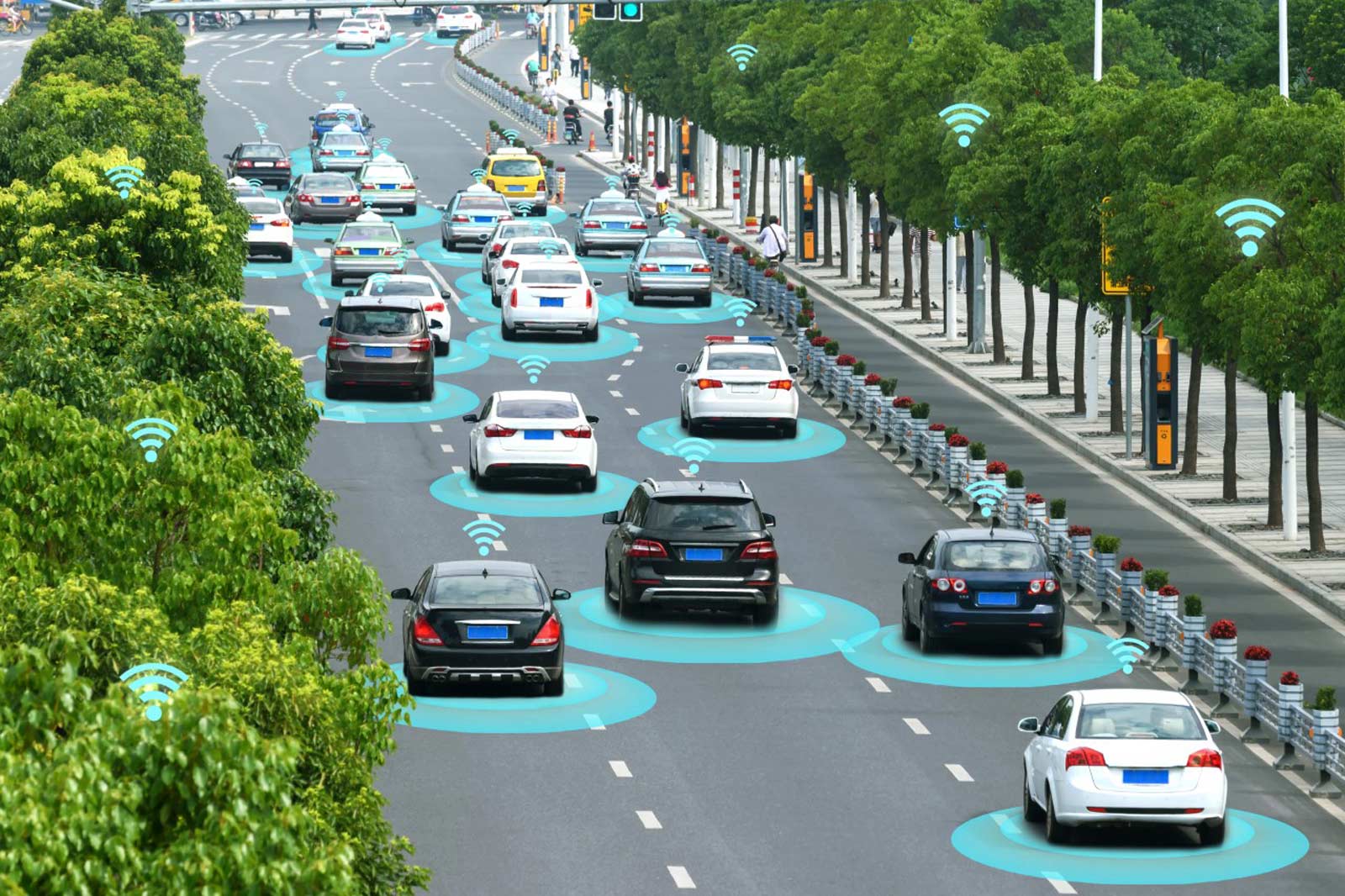Connected devices are nothing new in the twenty-first century. With the Internet of Things (IoT) on the rise, we are familiar with voice assistants, security systems, thermostats, even toasters communicating with us wirelessly. It should then come as no surprise that connected cars are no longer a vision of the future but a smart, attainable reality of today.
What if IoT could save lives on the road? With connected vehicle technology, it can.
In our recent webinar, we discover the positive impact connected vehicle technology provides to all travelers on the road. Donald Wang, Western Systems Connected Vehicle & Network Specialist, leads the conversation on how connected vehicle technology works and how to implement the future of traffic connectivity into your community.
What is Connected Vehicle Technology?
The Connected Vehicles Initiative, launched by the U.S. Department of Transportation (USDOT), aims to create a communication connection between cars, emergency vehicles, buses, trucks, trains and roads with smartphones and vehicle technology. Because connected vehicle technology devices can “talk” to each other, travelers on the road—be it drivers, bicyclists or pedestrians—receive alerts in order to better respond to traffic conditions in real-time.
Drivers with connected vehicle technology can receive notifications and alerts of approaching dangerous situations, such as a driver about to run a red light or an oncoming car. These alerts provide drivers more time to respond to the danger so that the incident can be prevented.
USDOT works with state and local transportation agencies, vehicle producers, solution providers and the public to test, evaluate and refine this technology. Companies like Yunex Traffic have created technology solutions to support this safe, interoperable wireless communication network among vehicles, traffic infrastructure and passenger personal communication devices.
Why Connected Vehicle Technology Matters
Airbags and anti-lock brakes have significantly increased the chance of surviving accidents on the road. But even this technology does not prevent car crashes from occurring. Sadly, roadway fatalities reached 37,461 in 2016—with 26,964 deaths resulting from non-impaired events, including distracted driving and speeding.
Connected vehicle technology focuses on preventing roadway collisions. In fact, it’s projected that connected vehicle technology can potentially reduce non-impaired crashes by 81%. That’s thousands of lives saved because travelers are alerted of potential safety threats before they happen.
Types of Connected Vehicle Applications
Through a variety of applications, connected vehicle technology is designed to help prevent crashes, ease traffic congestion and guide travelers through a safe experience throughout their entire journey on the road.
Vehicle-to-Infrastructure Safety Applications
With vehicle-to-infrastructure (V2I) technology, the traffic system infrastructure sends real-time alerts to drivers warning them of upcoming road conditions and hazards. Examples include wrong-way entry, pedestrian collision warning, distress notification, preemptive emergency audio, red light violation warning, satellite-provided info message and deceleration warnings on curves, school zones or exit ramps.
Vehicle-to-Vehicle Safety Applications
Through wireless information exchange, vehicle-to-vehicle (V2V) technology measures the speed and position of surrounding vehicles. Drivers receive an alert to prevent any circumstance where a vehicle would share the same space in the road as another vehicle, bicyclist or pedestrian. Examples include intersection movement assist, emergency brake lights, forward collision warning, turning in front of a bus, traffic jam ahead and approaching pedestrian or bicyclist.
Mobility Applications
Mobility applications serve drivers specific face calls from transit vehicles and emergency vehicles as well as detour or guidance info. Examples include priority green light, priority lane use, time to green, pedestrian at signal, transit signal priority, emergency vehicle priority and emergency route guidance input.
Management Applications
Managing connected vehicle technology products must be done properly, efficiently and intelligently. This suite of apps provides the bigger picture, allowing for both automatic/trigger and information sharing. Examples include probe-enabled traffic monitoring, Wi-Fi travel time, Bluetooth travel time, RSU management, OBU management and automatic range check.
Meet the Roadside Unit
Yunex Traffic roadside unit (RSU) acts as a gateway that allows two-way communication between vehicles equipped with connected vehicle technology and local traffic systems. In accordance with the latest standards, an RSU provides low latency so that it communicates the notification or alert quickly to travelers—as quickly as 10 times per second—in order to respond to high-speed events like crash avoidance.
Yunex Traffic RSU connects to all major traffic controllers without the need of any additional hardware. This roadside unit is compliant with USDOT 4.1 specifications and is OmniAir certified. This device features a weatherproof enclosure, enabled Wi-Fi for travel time and an integrated LTE for fast backhaul communication.
Manage Connected Vehicle Technology with CONCERT
CONCERT by Yunex Traffic provides advanced traffic system functionality for regional or state-wide applications, including connected vehicle technology. The module approach to this traffic management system supports notification management for traffic, freeway, transit, weather and parking alerts. You can manage your complex networks and operations through CONCERT’s sophisticated analysis tools, incident management tools and responsive plans.
Where Do I Start?
Western System offers the latest connected vehicle technology devices and management systems to support all your needs for the ITS environment. You can count on our technical and territory experts to guide you throughout the process of setting up your traffic network for connected vehicle technology. Our technical support team is also on standby to answer any of your questions along the way, be it by phone, email and online webinars as well as optional onsite field services.

